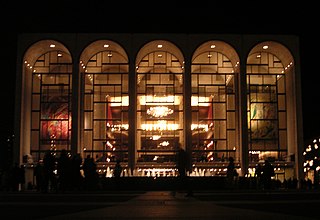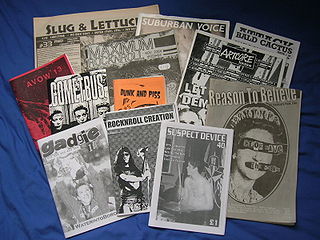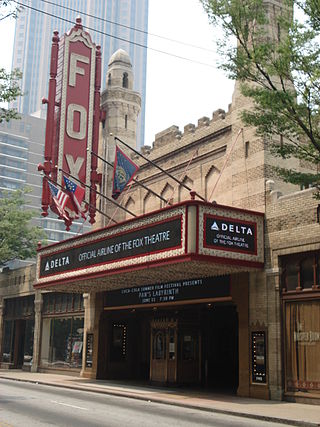No wave was an avant-garde music genre and visual art scene that emerged in the late 1970s in Downtown New York City. The term was a pun based on the rejection of commercial new wave music. Reacting against punk rock's recycling of rock and roll clichés, no wave musicians instead experimented with noise, dissonance, and atonality, as well as non-rock genres like free jazz, funk, and disco. The scene often reflected an abrasive, confrontational, and nihilistic world view.

New Musical Express (NME) is a British music, film, gaming, and culture website and brand. Founded as a newspaper in 1952, with the publication being referred to as a 'rock inkie', the NME would become a magazine that ended up as a free publication, before becoming an online brand which includes its website and radio stations.
East Coast hip hop is a regional subgenre of hip hop music that originated in New York City during the 1970s. Hip hop is recognized to have originated and evolved first in The Bronx, New York City.

The music of New York City is a diverse and important field in the world of music. It has long been a thriving home for popular genres such as jazz, rock, soul music, R&B, funk, and the urban blues, as well as classical and art music. It is the birthplace of hip hop, garage house, boogaloo, doo wop, bebop, punk rock, disco, and new wave. It is also the birthplace of salsa music, born from a fusion of Cuban and Puerto Rican influences that came together in New York's Latino neighborhoods in the 1960s. The city's culture, a melting pot of nations from around the world, has produced vital folk music scenes such as Irish-American music and Jewish klezmer. Beginning with the rise of popular sheet music in the early 20th century, New York's Broadway musical theater, and Tin Pan Alley's songcraft, New York has been a major part of the American music industry.
Popular music of the United Kingdom in the 1980s built on the post-punk and new wave movements, incorporating different sources of inspiration from subgenres and what is now classed as world music in the shape of Jamaican and Indian music. It also explored the consequences of new technology and social change in the electronic music of synthpop. In the early years of the decade, while subgenres like heavy metal music continued to develop separately, there was a considerable crossover between rock and more commercial popular music, with a large number of more "serious" bands, like The Police and UB40, enjoying considerable single chart success.

Vibe is an American music and entertainment magazine founded by producers David Salzman and Quincy Jones. The publication predominantly features R&B and hip hop music artists, actors and other entertainers. After shutting down production in the summer of 2009, it was purchased by the private equity investment fund InterMedia Partners, then issued bi-monthly with double covers and a larger online presence. The magazine's target demographic is predominantly young, urban followers of hip hop culture. In 2014, the magazine discontinued its print version.

World War 3 Illustrated is an American comics anthology magazine with a left-wing political focus, founded in 1979 by New York City comic book artists Peter Kuper and Seth Tobocman, and painter Christof Kohlhofer, and subsequently produced by a collective with a rotating editorship.

Punk visual art is artwork associated with the punk subculture and the No wave movement. It is prevalent in punk rock album covers, flyers for punk concerts and punk zines, but has also been prolific in other mediums, such as the visual arts, the performing arts, literature and cinema. Punk manifested itself "differently but consistently" in different cultural spheres. Punk also led to the birth of several movements: new wave, no wave, dark wave, industrial, hardcore, queercore, etc., which are sometimes showcased in art galleries and exhibition spaces. The punk aesthetic was a dominant strand from 1982 to 1986 in the many art galleries of the East Village of Manhattan.
Michael Thomas Holman is a New York-based artist, writer, filmmaker and musician. He is also an early 1980s downtown scene subculturalist and creator of the Hip Hop music program Graffiti Rock. Holman is a founding member, along with Jean-Michel Basquiat, of the experimental band Gray.

Patricia Titchener, known by her stage name Patti Astor, was an American performer who was a key actress in New York City underground films of the 1970s, and the East Village art scene of the 1980s, and involved in the early popularizing of hip hop. She co-founded the instrumental contemporary art gallery, Fun Gallery.

Michael Lawrence Marrow, known as PHASE 2 and Lonny Wood, was an American aerosol paint artist based in New York City. Mostly active in the 1970s, Phase 2 is generally credited with originating the "bubble letter" style of aerosol writing, also known as "softies".

The Bristol underground scene is a cultural movement in Bristol beginning in the early 1980s. The scene was born out of a lack of mainstream clubs catering for the emergence of hip hop music, with street and underground parties a mainstay. Crews formed playing hip hop in disused venues with sound systems borrowed from the reggae scene: City Rockers, 2 Bad, 2 Tuff, KC Rock, UD4, FBI, Dirty Den, Juice Crew, Rene & Bacus, Soul Twins, KC Rock, Fresh 4, and the Wild Bunch were among them. These names were the precursors to the more well known names that came from this scene. It is characterized by musicians and graffiti artists. The scene was influenced by the city's multiculturalism, political activism, and the arts movements of punk, reggae, hip hop, hippies and new age.

Beyond Race Magazine (BRM) is a quarterly magazine based in New York City primarily centered on independent and emerging artists, covering music, film, and other arts, such as literature, graffiti, tattooing, and visual arts. The publication also reports heavily on progressive issues and culture, in general.

A poseur is someone who poses for effect, or behaves affectedly, who affects a particular attitude, character or manner to impress others, or who pretends to belong to a particular group. A poseur may be a person who pretends to be what they are not or an insincere person; they may have a flair for drama or behave as if they are onstage in daily life.

Janette Beckman is a British documentary photographer who has worked in London, New York and Los Angeles. Beckman describes herself as a documentary photographer. While she produces a lot of work on location, she is also a studio portrait photographer. Her work has appeared on records for the major labels, and in magazines including Esquire,Rolling Stone,Glamour,Italian Vogue,The Times,Newsweek,Jalouse,Mojo and others.

Soul Underground was a UK-based music magazine covering "underground" black music and dance music, which launched in October 1987 and ceased publication in January 1991. The magazine was conceived as a reaction to what co-founders Darren Reynolds and David Lubich saw as the failure of the mainstream music press to cover the growth of an underground dance music scene in the UK. This went beyond the music itself to the fashions, warehouse parties and subcultures that were finding their feet at the time.
Post-punk is a broad genre of music that emerged in 1977 in the wake of punk rock. Post-punk musicians departed from punk's traditional elements and raw simplicity, instead adopting a broader, more experimental approach that encompassed a variety of avant-garde sensibilities and non-rock influences. Inspired by punk's energy and do it yourself ethic but determined to break from rock cliches, artists experimented with styles like funk, electronic music, jazz, and dance music; the production techniques of dub and disco; and ideas from art and politics, including critical theory, modernist art, cinema and literature. These communities produced independent record labels, visual art, multimedia performances and fanzines.

The arts in Atlanta are well-represented, with a prominent presence in music, fine art, and theater.
Tessa Hughes-Freeland is a British-born experimental film maker, writer living in New York City. Her films have screened internationally in North America, Europe and Australia and in prominent museums and galleries, including the Museum of Modern Art (MOMA); the Museum of Contemporary Art, Los Angeles; the Whitney Museum of American Art; the New Museum of Contemporary Art in New York; and the KW Institute of Contemporary Art in Berlin. She has collaborated on live multi-media projects with musicians like John Zorn and J. G. Thirlwell. She and Ela Troyano co-founded the New York Film Festival Downtown in 1984 and served as its co-directors until 1990. Hughes-Freeland later served as President of the Board of Directors of the Film-Makers Co-Operative in New York City from 1998-2001. She has published articles in numerous books, including “Naked Lens: Beat Cinema” and “No Focus: Punk Film,” and in periodicals including PAPER Magazine, Filmmaker magazine, GQ, the East Village Eye, and Film Threat.

Leonard Abrams was an American journalist and the founder of East Village Eye.













